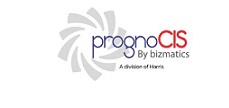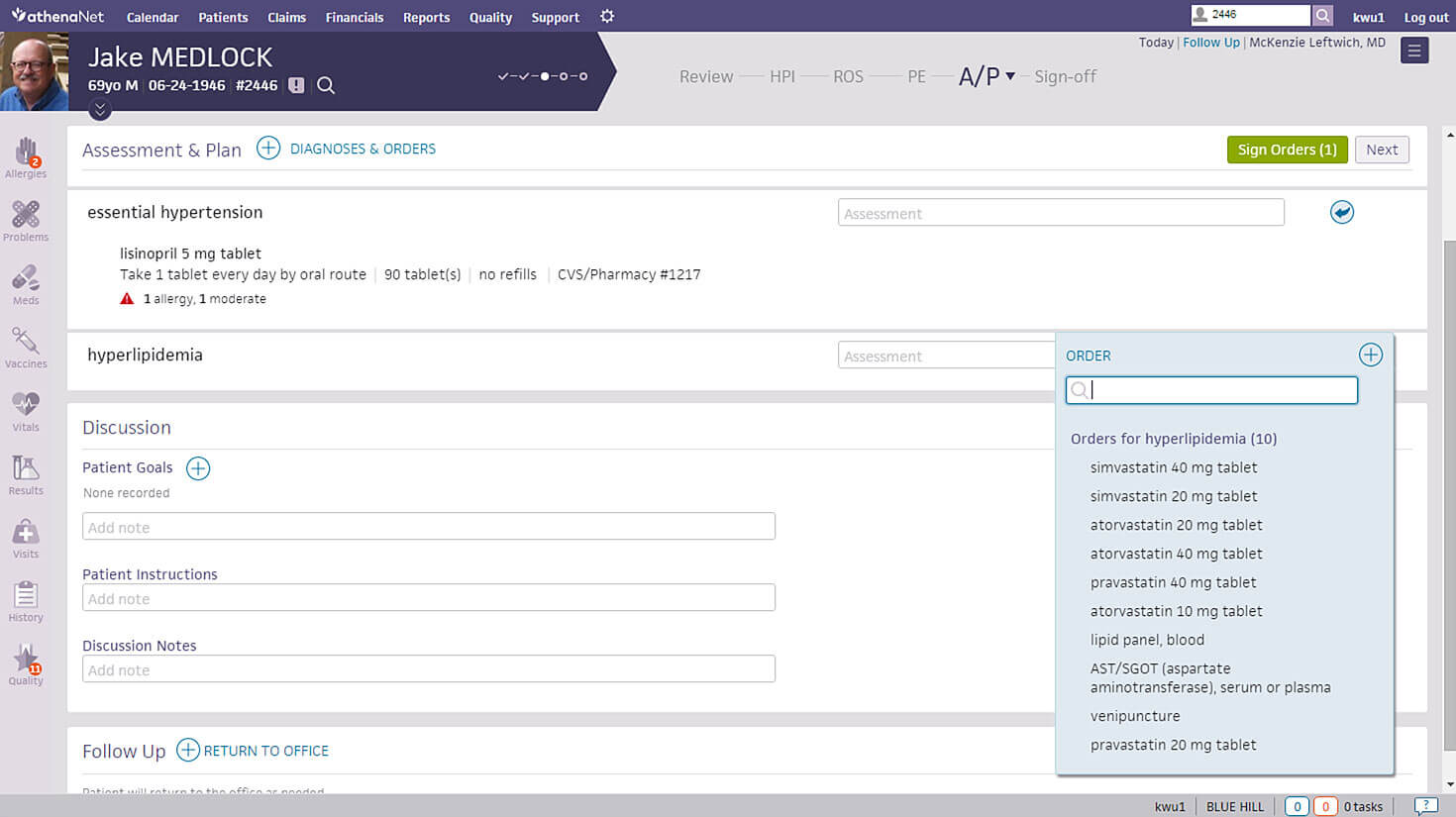What is In Vitro Fertilization (IVF) EHR Software?
Commonly known as IVF, In Vitro Fertilization is an assisted reproductive technology. This process of fertilization is carried out by extraction of eggs, taking sperm samples, and then mixing the egg and sperm in a laboratory dish. IVF and other types of assisted reproduction processes have led to the birth of more than 1 million babies in the United States since 1981.
This great number of births means that IVF practices have a lot of work to do when it comes to stuff like recording, securing, and tracking patients’ information, planning, and executing all the tasks. It is extremely important to follow strict protocols to stay organized while performing this important task. In this immensely crucial work, IVF software helps in easing your task.
Most of the IVF software does the work of a specialized EMR system and offer common features, like billing, charting, and notes. In addition to these features, maintaining donor and surrogate databases and important information about specific embryos and sperm cells are features that are offered by IVF systems.
Main features of IVF software
To have a good understanding of how the software works, it is advisable to learn about the different features and functionalities of the software. Before choosing IVF EHR software, we should check if the software has the following key features:
Patient documentation – The IVF software must be able to record, track and document all the relevant information about the patient couples. The documentation must also include their medical history, disease diagnoses, lab results, treatments, and demographics.
Registration – After collecting and documenting the relevant information about the donors and surrogates, the software should register them in the database.
Treatment Options – There should be a treatment management feature that supports multiple cure options keeping in mind all the notes, analysis, and diagnostics.
Embryo/Sperm Management – After collecting all the sperm and embryo samples, they must be kept organized by assigning tracking collection dates to them, running proper assessments, and checking the storage status.
Batch Grouping – There should be a feature that links all the data and medical tools that are used during the treatment, and groups the data into batches. Doing this can track the success rate of pregnancies, and problems with different cases can be identified as soon as they arise.
What You Need To Know About EMR Software
Overview
Electronic Medical Records Software or commonly referred to as EMR Software represents the electronic method of storing medical records for patients. Using specially designed software, physicians and other medical professionals can store anything ranging from patient demographics to extensive clinical information about patients, such as medical history, social history, lab reports, and more.
EMR Software by Specialty
Since all medical providers (MDs, DOs, PAs, NPs, LCSW, OT, etc.) work in a distinct manner based on their background and medical specialty, EHR Software or EMR Software must accommodate the unique style and documentation requirements. Examples of such specialty-specific features include the ability to annotate on images or the capability to store before/after photos for Pain Management specialists and Dermatology specialists respectively. Similarly, other specialties such as Pediatrics, Oncology, Podiatry, Ophthalmology, Neurology, Nephrology, Dialysis Centers, Rheumatology, and Chiropractic Care require their unique set of specialty-specific features to simplify adoption.
Meaningful-Use
Since the introduction of the HITECH Act, healthcare IT has undergone a massive transition starting from the widely recognized Meaningful Use program to what is now known as MACRA, the Medicare EHR Incentive Program. The Meaningful Use program has transformed and now formed part of the four components of the new Merit-Based Incentive Payment System (MIPS), which itself is a fundamental part of MACRA.
For some medical practices, the transition from paper-based records to EMR Software (Electronic Medical Records Software) has not been a simple one. Regardless, realizing that the benefits of utilizing ONC Certified EMR Software far outweigh the hassle and challenges associated with it – ensuring a viable future, most practices today have successfully transformed their clinical and administrative operations to EMR Software.
EMR Software Benefits
Aside from ensuring tangible financial incentives and profitability, practices converting to EMR / EHR Software have seen the following benefits:
EMR Software Requirements by Practice Size
Just like a medical specialty, EHR Software requirements also depend on the size of the medical practice. From solo-provider clinics to large multi-provider, multi-specialty clinics, every practice has unique inherent challenges that must be addressed by the EMR Software vendor.
Small or Solo Provider Practices
A small doctor’s office not only has a limited number of staff members but their EMR Software budgets are also extremely low compared to a large enterprise such as a hospital. Due to these budgetary constraints, many providers simply choose to employ Free EMR Software or choose an affordable EHR Software vendor with a low fixed monthly fee. Cloud-based access is one such important requirement so that these providers can access patient charts even from home when needed.
Medium-Sized Practices
These practices usually consist of 5 to 10 medical providers often belonging to the same medical specialty. Their requirements are more stringent, and their budget is also considerably large. Aside from specialty-focused requirements (EHR Software by Specialty), these practices also require unique features such as interoperability, dedicated customer support, multi-device support as well as extensive reporting functionality to keep an eye on the overall performance of the practice.
Large practices
Larger group practices generally comprise more than fifteen or often twenty medical providers. These practices usually provide medical services that fall under various medical specialties (Orthopedics, Pain Management, Surgery, Chiropractic Medicine, Family Medicine, etc.). Therefore, these practices require support for multiple users to access the system simultaneously, as well as for the Scheduling software to accommodate multiple locations, providers, and resources such as Dialysis Chairs, procedure room allocation, etc. These practices also keep replacing or adding staff members and need a scalable solution.
Hospitals or enterprise organizations
EHR software companies such as Epic, Cerner, AllScripts, NextGen, Athenahealth, IMS by Meditab, eClinicalWorks, Meditech, McKesson, MEDHOST, etc. usually target and provide solutions for larger corporations like Hospitals, ACOs, PCMH, IPAs, CINs (Clinically Integrated Networks), Public Health Departments, etc.
These customers have the most elaborate list of requirements, which are usually documented in the form of an RFI or RFP to assess and shortlist vendors that can meet them. The requirements consist of features like inventory management modules, interface with local labs (LIS), machines, and diagnostic equipment along with drug dispensing (pharmacy management software) and electronic medication administration records (EMAR), etc.
These entities also require the EHR software also need to integrate with multiple other software and medical devices.
Why does your practice need EHR Software?
Since the introduction of Meaningful Use, most healthcare practices simply have little or no choice but to convert their practice operations to EHR software. However, most providers today select the EHR software of their choice that best suits their specific needs and must perform an extensive search to evaluate all available options before they find one that is suitable. Most potential EMR Software buyers in the market today have the following in common:
- Do not know what they are looking for
- Know exactly what they want but don’t know where to start or find it
- Relying on advice from colleagues using EMR software already
Although #3 is ideal, every provider and their practice workflows are unique and therefore what works for one provider may not suit the other. “One size fits all” simply doesn’t apply in the world of healthcare IT. Software experts and industry specialists are an ideal source of information, advice and ultimately ensuring that the right decision is made.
Market Trends to Be Aware Of
Like anything else, the EMR software industry is also subject to constant changes. From new technology to legalities and governing bodies, everything is constantly changing. Here are some of the changes I think it would do well for you to keep track of.
Cloud-Based Services
Recent research found that only 25% of practitioners are interested in a web-based model and only 50% are willing to have it as an initial model that eventually transitions to cloud-based. Cloud-based EMR software cuts down on steep upfront costs for client servers and can be hosted on any device that has a web browser. It’s no surprise that more and more vendors are transitioning to cloud-based software because the industry demands are changing. The move to the public cloud for healthcare is vital in the current changing landscape. For practices that don’t adopt new cloud services, the old inferior feature set coupled with the higher prices will hinder the business dramatically. This gulf between the old software and the new cloud-based software will only grow more exponentially as time goes on.
Meaningful Use Changes
At a recent healthcare conference Andy Slavitt, the administrator of the Centers for Medicare & Medicaid Services declared that Meaningful Use was over, and would be replaced by the end of this year with something better. But a deeper look into the claims revealed that meaningful use would very much still be there, only much improved.
The new measures aim to make the reporting and benchmark for reaching the required reports much easier and laxer than under Meaningful Use, along with other changes.
As the CMS has officially renamed Meaningful Use to “Promoting Interoperability” as of 2018, it’s important to understand its updated principles. Effective interoperability of healthcare data will ensure that electronic health information is shared properly between healthcare and public health partners in the right format and at the right time. Starting in 2022, the CMS requires all eligible healthcare services to implement upgraded versions of EHR software that utilize this updated definition.
In 2025, the demand for EMR software solutions for healthcare practices has continued to rise, with market growth estimated at around 6-7% year-over-year as healthcare providers increasingly prioritize digital transformation and interoperability. This increase is largely driven by the adoption of advanced technologies like AI and cloud computing within these systems, which enhance clinical workflows and patient care. Epic Systems has expanded its dominance, now capturing over 35% of the market, particularly among large multispecialty organizations. Meanwhile, Oracle Health (formerly Cerner) has faced challenges, especially in retaining smaller hospitals, contributing to a slight decline in its market share. Together, major players like Epic, Oracle Health, Meditech and Allscripts account for a significant portion of the EHR market, reflecting the ongoing evolution and consolidation within the industry.
Widespread Interoperability
Electronic Medical Records don’t offer patients the ability to access their own records across multiple healthcare organizations due to the lack of data-sharing standards set between different practices. This causes significant problems for patients who receive care from multiple different centers. The issue also makes the diagnosis of patients harder for physicians and healthcare providers. Due to this, EMR/EHR providers are updating their software to include interoperability and integration features to allow data to be shared between these different organizations.












